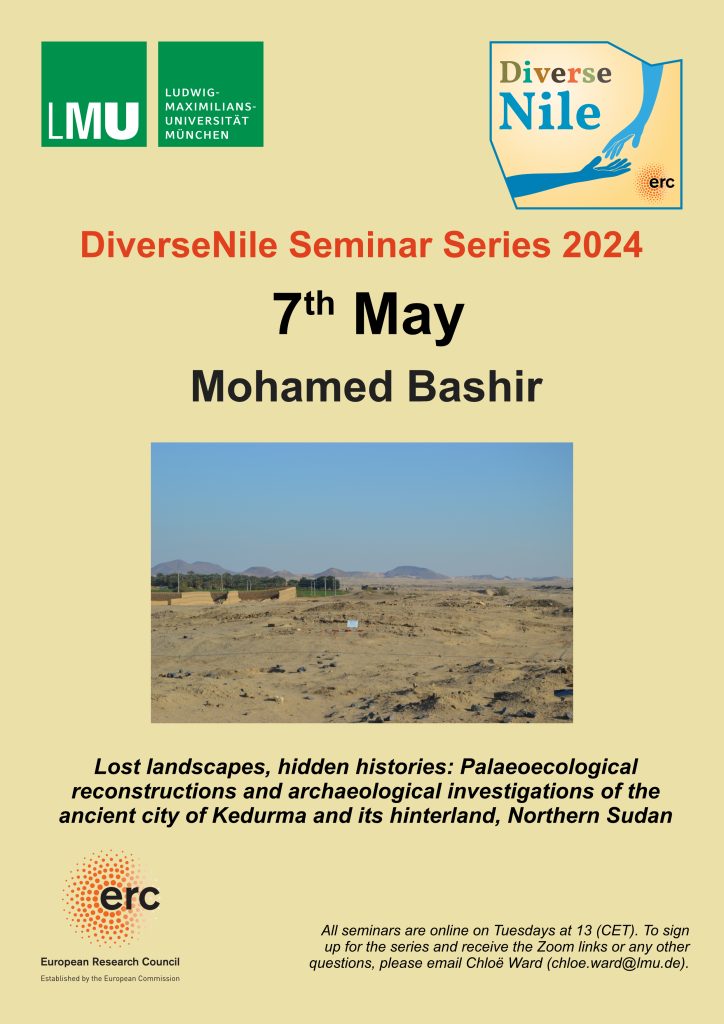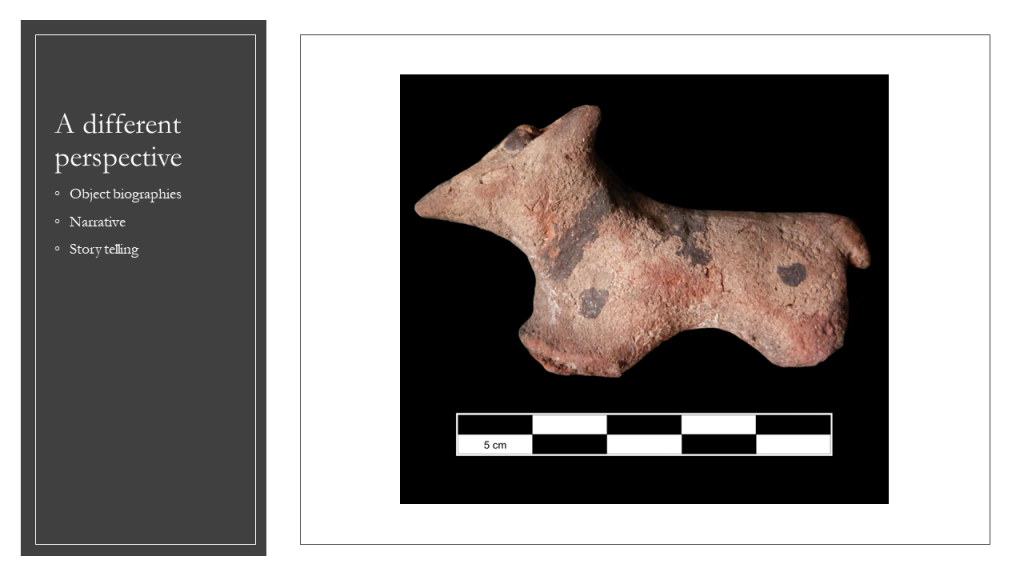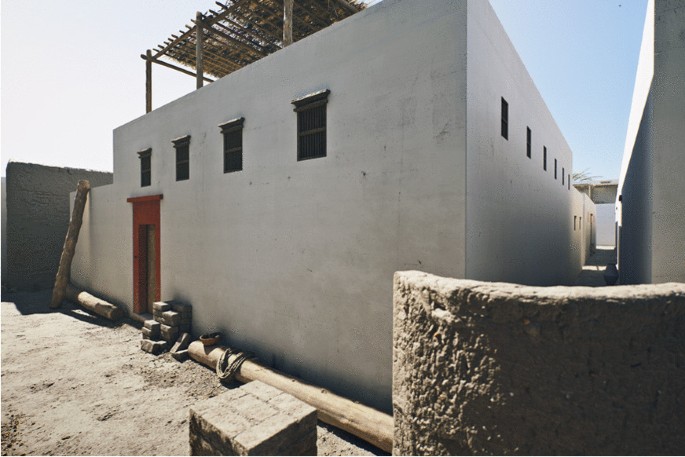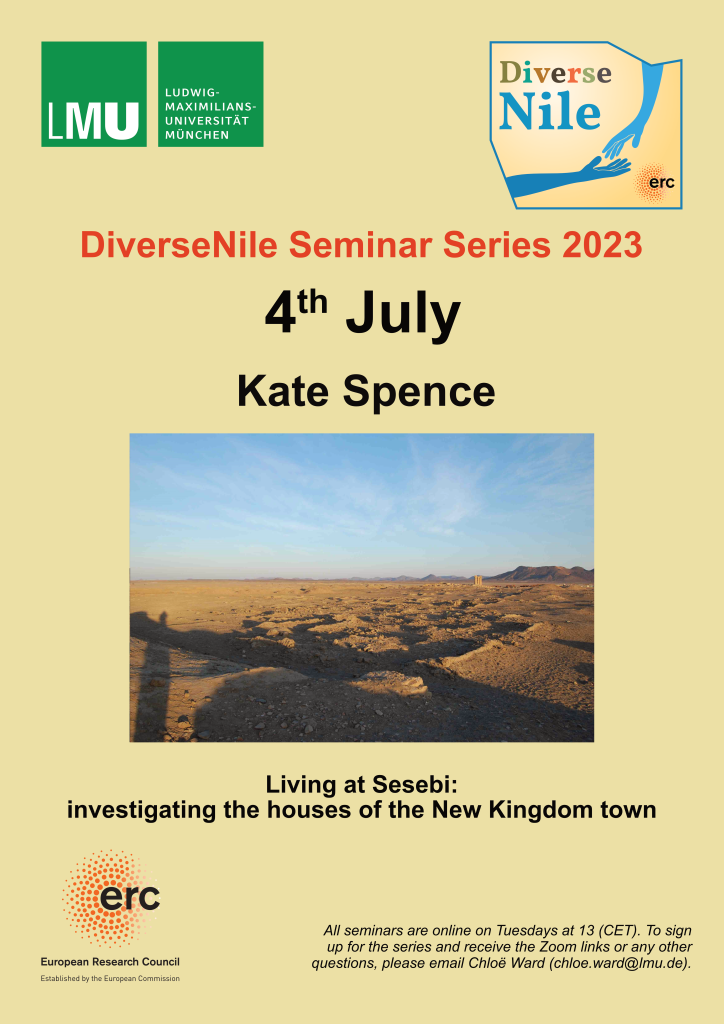The start of this year’s DiverseNile Seminar on May 7th is approaching! I am very much looking forward to the lecture by Mohamed Bashir (currently Visiting Research Scholar, Institute for the Study of the Ancient World, NYU) with the title “Lost landscapes, hidden histories: Palaeoecological reconstructions and archaeological investigations of the ancient city of Kedurma and its hinterland, Northern Sudan”.

Mohamed kindly provided us with an abstract for his talk:
„This study addresses the complicated/unexplored relationship between the ancient city of Kedurma in the Third Cataract region of northern Sudan and the surrounding hinterland. It focuses on the reconstruction of the palaeoecological conditions and the exploration of the archaeological remains, looking for the dynamic process that shaped the landscape over time in interaction with environmental factors and human activities. By integrating palaeoecological data and archaeological finds, this study seeks to uncover the historical development of the city and its hinterland.
Through interdisciplinary approaches, including survey, excavation, and analysis of archaeological artefacts, we can identify patterns of land use, settlement dynamics and cultural interactions. Through analysis, we seek to reconstruct past environments and human interventions in this urban periphery. This research contributes to a deeper understanding of the surrounding landscapes of the Third Cataract region and their impact on the development of Kedurma, as well as their significance in a broader historical narrative.
Ultimately, this study sheds light on the interconnectedness of human societies, urbanization and environmental change and offers valuable perspectives for urban planning, heritage conservation and sustainable development.“
This presentation ties in perfectly with the goals of the DiverseNile project and our investigations of the hinterland of the ancient cities of Amara West and Sai Island applying the landscape biography approach. This case study will also showcase the importance to investigate urbanization processes in the Middle Nile – also in respect to sustainable development goals as Mohamed pointed out. All in all, there are plenty of reasons why you should attend this upcoming seminar!



